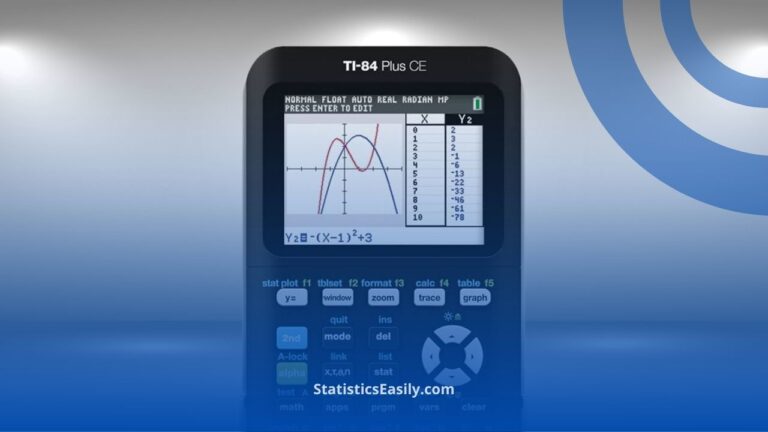A Comprehensive Guide on Using a Percentage Table Calculator
You will learn the role of a percentage table calculator in data analysis and how to utilize it effectively.
Introduction
The role of tools and calculators in the ever-evolving data analysis landscape cannot be overstated. Among these, the “Percentage Table Calculator” is a pivotal resource. This calculator is not just a tool; it’s an essential companion for statisticians, analysts, and anyone who grapples with data. Its significance lies in its ability to simplify complex numerical data into comprehensible percentage values, a task fundamental to various forms of data analysis. Understanding and interpreting data as percentages can yield insights otherwise obscured by raw numbers, whether in financial modeling, academic research, or demographic studies.
This comprehensive guide will delve into the multifaceted world of percentage table calculators. We will focus on their fundamental operations and applications and the nuances that make them indispensable in contemporary data analysis. This article highlights an interactive “Percentage Table Calculator” integrated into the content. This feature allows you to apply the concepts discussed in real-time, giving you a hands-on understanding of how these calculators function and their practical utility in various scenarios. By the end of this article, you will have a theoretical knowledge of these calculators and practical experience in using them effectively.
Highlights
- Percentage calculators simplify complex statistical data into understandable figures.
- Effective in analyzing trends over periods, essential for time-series data.
- Key in budgeting and financial forecasting, offering precise data insights.
- Crucial for academic research, enhancing accuracy in data interpretation.
- Aids in demographic studies, providing clear percentage distributions.
Ad Title
Ad description. Lorem ipsum dolor sit amet, consectetur adipiscing elit.
Understanding Percentage Table Calculators
At the heart of data analysis lies the critical task of making sense of numbers, and this is where percentage table calculators prove to be indispensable. These calculators transform raw data into percentages, a more intuitive and comparable format across different contexts. This transformation is fundamental in various fields, from finance to education, where understanding data sets’ relative sizes and proportions is critical.
In finance, percentage table calculators aid in budgeting and financial forecasting by clearly showing how different categories contribute to the whole. In the educational sector, they are used to analyze and interpret academic data, such as student performance metrics. Similarly, in research, these calculators help quantify experimental results or survey data, making them more accessible to compare and interpret percentages.
An intriguing aspect of this article is including an interactive “Percentage Table Calculator.” This tool is a theoretical concept and a practical application embedded within the article. It allows you to apply the principles discussed, giving you firsthand experience converting and understanding data in percentage form. This interactive feature enhances your learning experience, demonstrating how percentage calculations can be seamlessly integrated into various analytical tasks.
History and Evolution of Percentage Calculators
Tracing back to the origins of percentage calculators reveals a fascinating journey through history. The concept of percentages has been integral to mathematics for centuries, but the tools to calculate them have evolved significantly. Initially, percentages were computed manually, a time-consuming process and prone to errors. This method prevailed until the advent of mechanical calculators in the 19th century, which began to simplify these calculations.
The fundamental transformation, however, occurred with the introduction of electronic calculators in the mid-20th century. These devices brought about a significant leap in efficiency and accuracy, allowing more complex calculations to be performed swiftly. The progression from basic electronic calculators to sophisticated software programs marked a pivotal change. Modern percentage calculators, often integrated into software like Excel or Tableau, offer advanced features such as automatic percentage calculations, data visualization, and statistical analysis capabilities.
The development of these tools mirrors the advancement in technology and the increasing complexity of data analysis needs. Today, percentage calculators are not just about simple arithmetic; they are about interpreting and analyzing data in a previously impossible way. They have become more user-friendly, allowing people from various professional backgrounds to utilize them effectively.
This historical perspective sets the stage for the interactive “Percentage Table Calculator” featured in this article. This modern tool embodies the evolution of percentage calculators, combining ease of use with advanced analytical capabilities, making it an indispensable asset in various data analysis fields.

How Percentage Table Calculators Work
The functionality of percentage table calculators is rooted in the basic principles of mathematics, particularly in the division and multiplication operations. These calculators perform two primary functions: first, they divide a part by the whole, and second, they convert this fraction into a percentage by multiplying it by 100.
Let’s take a simple example to illustrate this process. Suppose you have a data set representing the sales of four products in a store. The total sales are 1,000 units. Product A sold 300 units, Product B 200 units, Product C 400 units, and Product D 100 units. The percentage table calculator would compute the percentages of total sales for each product as follows:
- For Product A: 300/1000 × 100 = 30%
- For Product B: 200/1000 × 100 = 20%
- For Product C: 400/1000 × 100 = 40%
- For Product D: 100/1000 × 100 = 10%
This calculation method allows for quickly converting raw data into percentages, providing a clear and understandable way to interpret the data. For instance, it becomes apparent that Product C is the best seller, accounting for 40% of total sales.
Modern percentage table calculators can perform these calculations automatically, especially those integrated into software applications. They can handle large datasets and compute the percentages in real time, greatly enhancing efficiency and accuracy in data analysis. This functionality is handy in fields where data needs to be quickly converted into percentages for reporting or decision-making purposes.
This article’s interactive “Percentage Table Calculator” lets you input your data and see these calculations performed instantly. This hands-on experience demonstrates the calculator’s functionality. It reinforces your understanding of how percentage calculations are integral to data analysis.
Interactive Percentage Table Calculator
This digital calculator allows for the dynamic calculation of percentages based on user-entered data.
1. Specify Categories: Input the number of categories to generate the appropriate number of rows in the table.
2. Enter Data: Type its name and the corresponding count value for each category.
3. Automatic Calculation: As you enter count values, the calculator will automatically compute and display the percentage each category represents relative to the total.
4. Copy Function: Use the ‘Copy Table’ button to copy the table’s contents for use elsewhere quickly.
Percentage Table Calculator
| Category | Count | Percentage |
|---|
Practical Applications in Various Fields
Percentage table calculators are versatile tools used across various sectors, each with unique requirements and data analysis needs. This section explores their practical applications, providing insight into how these calculators facilitate different types of data interpretation and decision-making.
Finance and Business: In the financial sector, percentage calculators are crucial for budget analysis, cost distribution, and financial forecasting. They help businesses understand market trends and make informed decisions. For example, a retail company might use a percentage table calculator to determine the proportion of total sales contributed by each product line, guiding marketing and inventory decisions.
Healthcare: These calculators assist in epidemiological studies and patient data analysis. For instance, they might be used to calculate the percentage of patients responding to a specific treatment or the prevalence of a particular condition in a population. This information is vital for public health strategies and medical research.
Education: Educators and researchers use percentage calculators to analyze student performance and educational outcomes. For example, a school might use them to determine what percentage of students have achieved specific grades or how student performance varies across different subjects.
Demographic Studies: In demographic research, percentage calculators help understand population distributions and trends. Researchers might use them to analyze census data, like calculating the percentage of a population within a specific age group or living in a particular geographic area.
Environmental Studies: In environmental science, these tools are used for data analysis regarding resource usage, pollution levels, and conservation efforts. For example, calculating the percentage of renewable energy contributions to the total energy mix in a region.
Case Study Example: A recent study in urban planning used a percentage table calculator to analyze traffic flow data in a major city. The study aimed to identify the most congested areas. By converting raw traffic data into percentages, planners could quickly identify which intersections accounted for the highest traffic jams, leading to targeted interventions to alleviate congestion.
In each field, percentage table calculators transform complex datasets into manageable, comprehensible percentages, aiding in more straightforward interpretation and effective decision-making.
Common Mistakes and Best Practices
Utilizing percentage table calculators is generally straightforward, but specific common errors can lead to inaccurate results. Understanding these pitfalls and adopting best practices can significantly enhance the effectiveness of these tools.
Common Errors:
Incorrect Data Entry: The most common error is the misentry of data. Even a tiny mistake in input can lead to drastically wrong calculations. Always double-check the figures you enter.
Misinterpretation of Results: Users sometimes misinterpret the percentages, especially in complex datasets. Ensure you understand the context and meaning of each data point.
Ignoring the Total Value: Forgetting or wrongly setting the total value against which percentages are calculated can skew results. Always confirm the total value is correctly entered or calculated.
Best Practices:
Data Validation: Before using the calculator, validate your data for accuracy and relevance. This step is crucial in preventing garbage-in and garbage-out scenarios.
Understand the Context: Know what your data represents and the implications of the percentage results. This understanding is essential for accurate analysis and decision-making.
Regularly Update Data: In dynamic environments, ensure your data is current and regularly updated, as outdated data can lead to irrelevant percentage calculations.
Use Supporting Tools: When dealing with large datasets, use spreadsheet software or databases to organize and preprocess data before using a percentage calculator.
Training and Familiarization: For those new to percentage calculators, learn how they work. This investment will pay off in more accurate and efficient data analysis.
Case Study Example:
In a marketing analysis case study, a business initially misinterpreted percentage results from their campaign data due to incorrect total value entry. After revising their approach, using validated data, and ensuring the correct total value, they accurately assessed the campaign's performance. This correction led to better marketing strategies based on reliable data analysis.
Ad Title
Ad description. Lorem ipsum dolor sit amet, consectetur adipiscing elit.
Conclusion
Throughout this comprehensive guide, we have explored the versatile world of percentage table calculators, a tool essential in the modern data analysis landscape. From its historical evolution, from manual calculations to the advent of sophisticated software-integrated tools, we have seen how these calculators have become indispensable in simplifying complex numerical data into comprehensible percentage values.
Key highlights of this guide include:
1. The fundamental operations and applications of percentage calculators across various fields, from finance to education.
2. The introduction and hands-on experience with an interactive "Percentage Table Calculator" embedded within the article demonstrate these tools' practical utility in real-time scenarios.
3. The common mistakes encountered while using these calculators and best practices to optimize their use, ensuring accuracy and efficiency in data analysis.
The "Percentage Table Calculator" stands out as a tool for basic arithmetic and as a powerful instrument for interpreting and analyzing data in previously unattainable ways. Its user-friendliness and adaptability across different professional backgrounds make it a valuable asset in any data analysis toolkit.
In conclusion, the percentage table calculator is more than just a calculator; it is a lens through which complex data can be viewed, understood, and utilized effectively. As we continue to navigate the ever-evolving domain of data analysis, the role of such tools becomes increasingly critical in simplifying data and empowering decision-making with precision and clarity.
Recommended Articles
Are you interested in more data analysis insights? Explore our blog for additional articles on similar topics and advanced statistical tools.
- The Empirical Rule Calculator
- Standard Deviation Calculator
- Box Plot: A Powerful Data Visualization Tool
Frequently Asked Questions (FAQs)
Q1: What is a Percentage Table Calculator? It's a specialized tool for converting raw data into percentage form, essential for detailed statistical analysis and interpretation.
Q2: How to do percentages with a table? Calculate percentages in a table by dividing each value by the total sum and multiplying by 100 to get the percentage.
Q3: How do I calculate what percentage of a number? Determine what percentage one number is of another by dividing the first number by the second and then multiplying by 100 for the percentage.
Q4: How do you calculate percentages in Tableau? Use calculated fields or percentage options in the analysis menu in Tableau to compute percentages based on your data set.
Q5: How Do Percentage Table Calculators Benefit Data Analysis? These calculators enhance data analysis by clearly visualizing data proportions, making complex information more accessible.
Q6: Are There Different Types of Percentage Calculators? Various types are tailored for specific applications, such as finance, academic research, or general data analysis.
Q7: How Accurate are Percentage Table Calculators? They are highly reliable when provided with correct input data, offering precise and accurate percentage calculations.
Q8: Can I Use These Calculators for Business Forecasting? They're ideal for financial analysis, market trend prediction, and budgeting in business settings.
Q9: Are Percentage Calculators User-Friendly for Non-Statisticians? Modern calculators are designed to be user-friendly, with intuitive interfaces suitable for experts and beginners.
Q10: Where Can I Access a Reliable Percentage Table Calculator? Reliable calculators can be found online; choosing one is essential based on its features and credibility.








